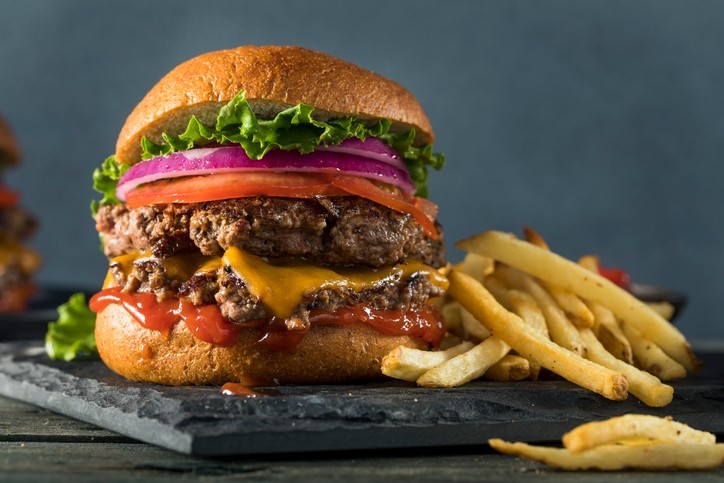What are the best colour options for plant-based meats?

According to botanical extract supplier, Naturex, whose portfolio includes colouring foods, plant-based meat analogues are “a booming sector” and, with colour one of the most important factors in determining a food’s appeal, manufacturers are interested in natural ways to colour meat alternatives.
Category manager for natural colours at Naturex Nathalie Pauleau said that carmine, derived from cochineal insects, is the most frequently used colour for real meat applications but cannot be used in plant based products because it is not vegetarian.
Vegetable-based alternatives include beetroot or red radish concentrates that deliver good colouring results, and in Europe, both can be classified as colouring foods, she said.
British company Moving Mountains uses beetroot juice for its Bleeding B12 burger, for instance. But there can be technical obstacles to overcome.
Heat and pH
“Depending on the application, beetroot can face some heat stability issues, whereas red radish is suitable for use only within three to six pH conditions,” Pauleau told us. “In some cases, lycopene, which has a better resistance to heat treatments, can provide an effective solution.
“It also depends on the exact shade needed by the customer or whether the application is raw or cooked. In some cases, the customer needs a more brownish shade, and we recommend caramelized sugar to achieve the appearance of cooked meat.
“These heat and pH issues mean that plant proteins are definitely not the easiest material to work with,” said Pauleau. “But on the other hand, it is sometimes easier to work with a material that has a neutral base colour because, unlike products that are already strongly coloured, it enables you to start from scratch.
“We generally find that the use of colouring foodstuffs is the best way to enhance the appeal of plant-based products,” she added.
The Avignon-headquartered company, which was recently acquired by Swiss flavour giant Givaudan, sees the bulk of demand for ingredients to be used in plant proteins coming from the US, “closely followed” by Europe, particularly Germany and the UK.
Bleeding hemes
Further along the food tech curve is Impossible Foods and its bleeding burger.
Founded by Stanford University biochemist and genomics expert Pat Brown – also the company’s CEO - Impossible Food’s star product is a plant-based burger made from the standard base ingredients of wheat, potato and soy protein. The addition of its IP-protected ingredient, leghemoglobin, however, means that the burger’s label lists added flavours but no colours.
Leghemoglobin is a heme molecule similar to myoglobin and haemoglobin that make blood and meat red but is found in the roots of nitrogen-fixing plants such as soy, meaning it is vegetarian-friendly. When added to the burger, it looks like blood.
How is Impossible Food’s leghemoglobin produced?
It is possible to extract leghemoglobin from the root nodules of plants but doing so at scale is not commercially feasible. Impossible Foods therefore ‘brews’ the molecule using yeast that has been genetically engineered to produce leghemoglobin. The yeast feeds on plant-based sugars added a food source. The final product contains no live yeast.
According to the company’s chief operating officer and chief financial officer David Lee, Impossible Foods’ platform “enables [it] to understand and reverse-engineer all animal products – meat, dairy, and fish”.
Cultured meat: A grey area
When Professor Mark Post and Peter Verstrate first unveiled their €250,000 burger back in 2013, it was made of in vitro muscle fibres that were grey in colour. The final product was coloured with beetroot juice and saffron.
Since then, Mosa Meat, the company that Post and Verstrate formed to commercialise the product, has been working to grow heme, the iron-containing molecule carried by myoglobin, that gives meat its colour, taste and aroma.
“We’re 70 to 80% there”, he said back in January.
Aleph Farms is an Israeli cultured meat company whose proprietary culture process means all the components of meat - muscle, fat, blood vessels and connective tissue – are ‘holistically’ grown together as opposed to other companies that grow single cells in suspension.
It says this results in a "three dimensional" meat product.
“Our 3D technology gives us the ability to grow all the cells that make up traditional meat together – the muscle fibres, the fat, the blood vessels and the connective tissue, such as collagen, that binds it,” CEO Didier Toubia said. “This is our main competitive advantage: our meat grows together like real meat.”
Aleph Farm’s finished product and final growth method are still under development and so have not yet been tested but regarding the colour, Toubia said: “The final cells should be pink.”

























